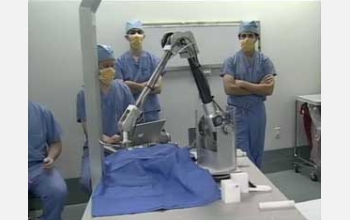|

Fact Sheet
Engineers Week 2006: NSF Research Highlights

Today's engineers are inspiration for the future
February 23, 2006
Engineers Week 2006 has arrived, and with it a chance to look back on the breakthroughs and developments engineers delivered in 2005.
NSF has a long history of supporting engineering, devoting more than $550 million dollars last year alone. The results of those investments have been rewarding, as the following 2005 highlights reveal.
Mitigating Damage from Disasters
Enhancing Human Capability
Improving Medical Technologies
Promoting Sustainability
New technologies and techniques
-NSF-

Media Contacts
Joshua A. Chamot, NSF (703) 292-7730 jchamot@nsf.gov

The National Science Foundation (NSF) is an independent federal agency that
supports fundamental research and education across all fields of science and
engineering, with an annual budget of $6.06 billion. NSF funds reach all 50
states through grants to over 1,900 universities and institutions. Each year,
NSF receives about 45,000 competitive requests for funding, and makes over
11,500 new funding awards. NSF also awards over $400 million in
professional and service contracts yearly.
 Get News Updates by Email Get News Updates by Email
Useful NSF Web Sites:
NSF Home Page: http://www.nsf.gov
NSF News: http://www.nsf.gov/news/
For the News Media: http://www.nsf.gov/news/newsroom.jsp
Science and Engineering Statistics: http://www.nsf.gov/statistics/
Awards Searches: http://www.nsf.gov/awardsearch/
|

The Rensselaer Polytechnic Institute Solar-Powered Autonomous Underwater Vehicle (SAUV).
Credit and Larger Version

Engineers inspect a portion of a New Orleans floodwall damaged in Hurricane Katrina.
Credit and Larger Version

Hong Liu (left) and Bruce Logan examine an electrochemically assisted microbial reactor system.
Credit and Larger Version

Ocean-buoy generators promise to convert the movement of waves into energy.
Credit and Larger Version

Polymer fibers grow on a fingerprint at 30 degrees Celsius and a relatively high humidity.
Credit and Larger Version
|







